I love garden surprises. Sure, there is some planning involved, but because the garden supports a collecting habit, the big picture is usually uncertain and often a mixed bag. What the collecting id of my psyche is up to all year is anyone’s guess, including mine, and uncertainty prevails. Excitement too. With spring comes the big reveal.
This year’s reveal shows a pronounced orange and blue theme.
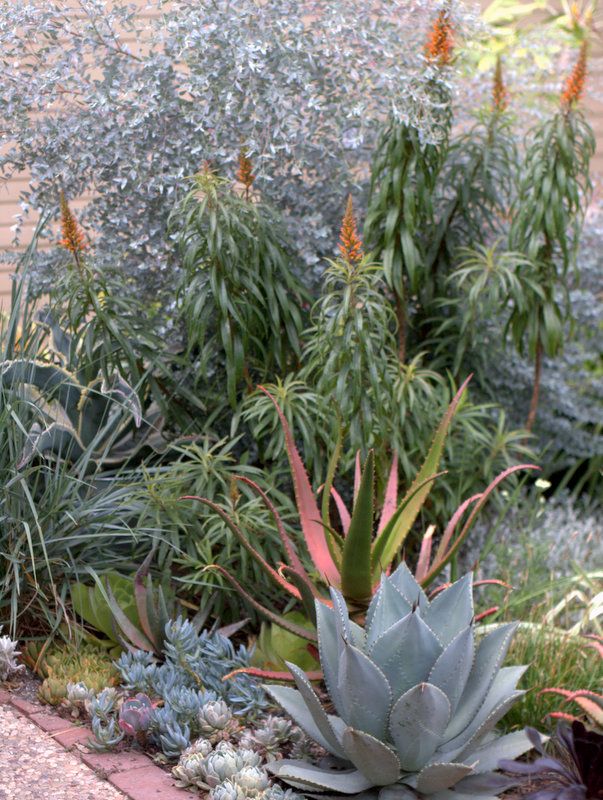
There’s a big, bold orange and blue statement with Eucalyuptus ‘Moon Lagoon’ now that Isoplexis isabelliana is in bloom.
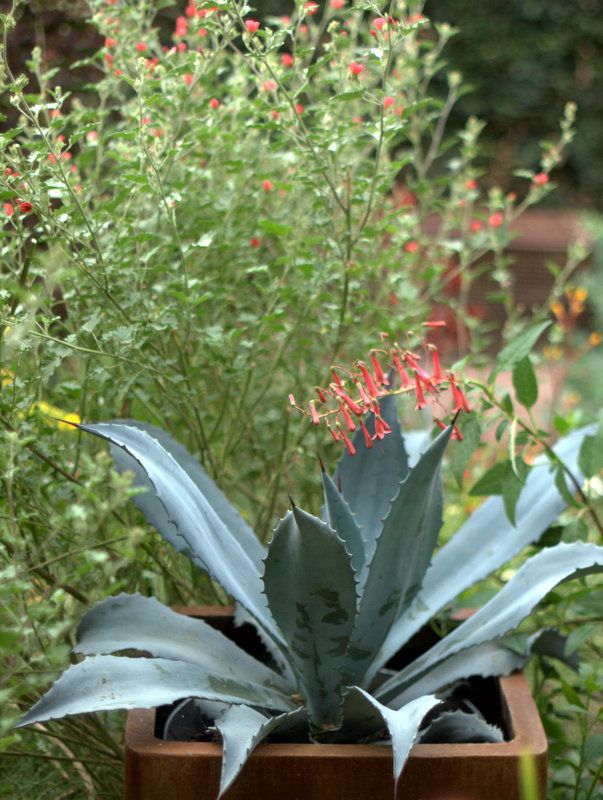
But there’s orange and blue everywhere.
Agave franzosinii with Phygelius ‘Diablo’ and Sphaeralcea ‘Newleaze Coral’
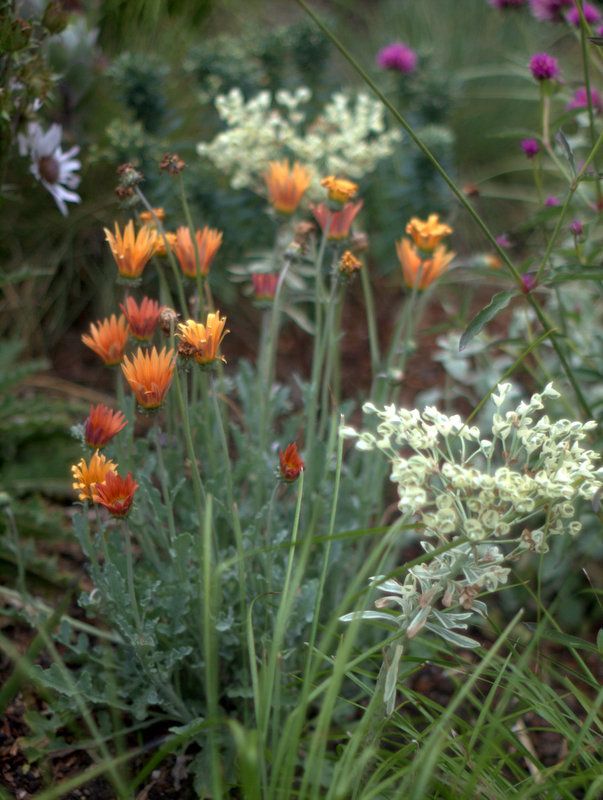
Arctotis ‘Opera,’ one of about three clumps threaded through lomandra, anigozanthos, euphorbias, still a youngish planting. The only real plan was for summer daisies to be orange, so orange varieties of arctotis and osteospermum were selected. The rest is all collector mania. Gomphrena ‘Fireworks,’ magenta bobs on the right, has been perennial. This is its second (or third?) year. It’s a pretty close substitute for alliums all summer long and matches clear orange in intensity.
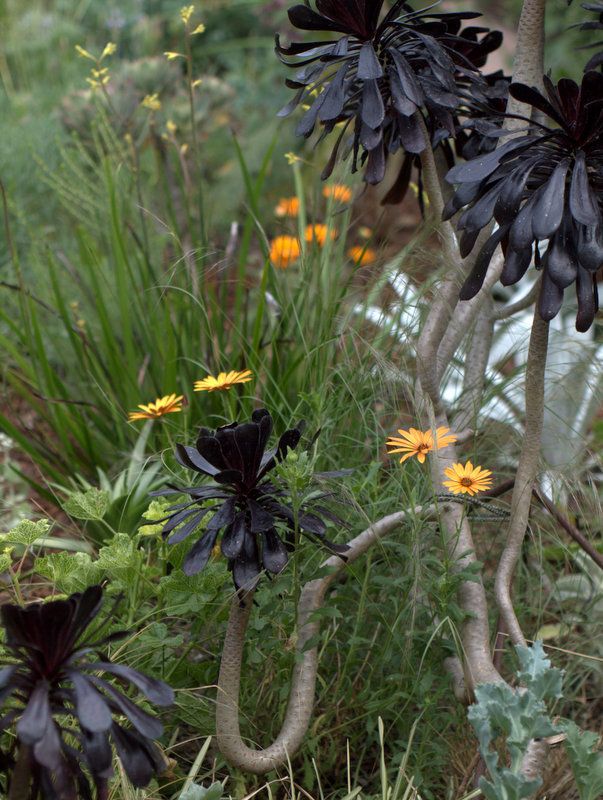
Osteospermum ‘Zion Orange’ was planted in January. There was a really good color selection of the South African daisies at the nurseries this spring, making possible your own personally customized veldt. Lower branches of this aeonium keep breaking off in winter storms then rooting, so it’s quite the undulating thicket now.
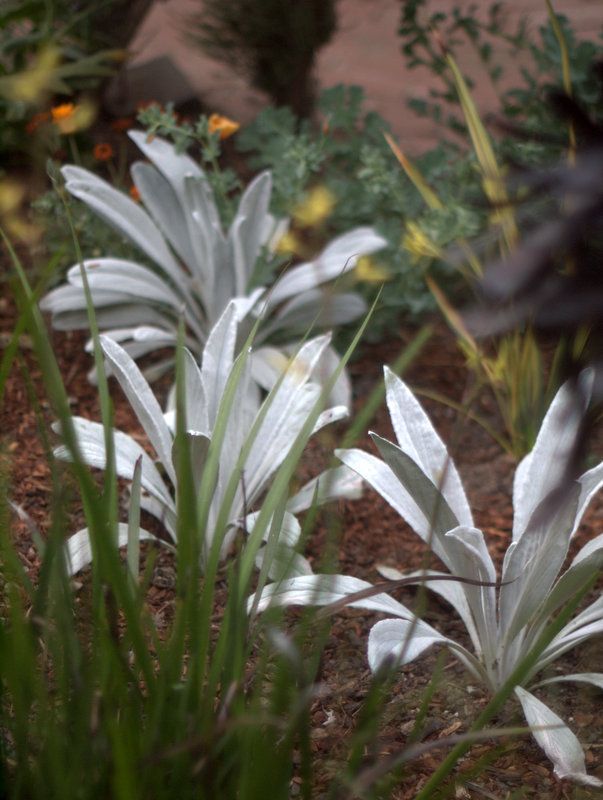
The source for all that blue (and silver) is the plentiful number of dry garden plants with leaves in those shades. New planting of Stachyls ‘Bella Grigio’ replaced biennial Echium simplex after it finished blooming. From reading other blogs, it’s uncertain whether this stachys will be a durable member of the garden or just a fleeting phenom.
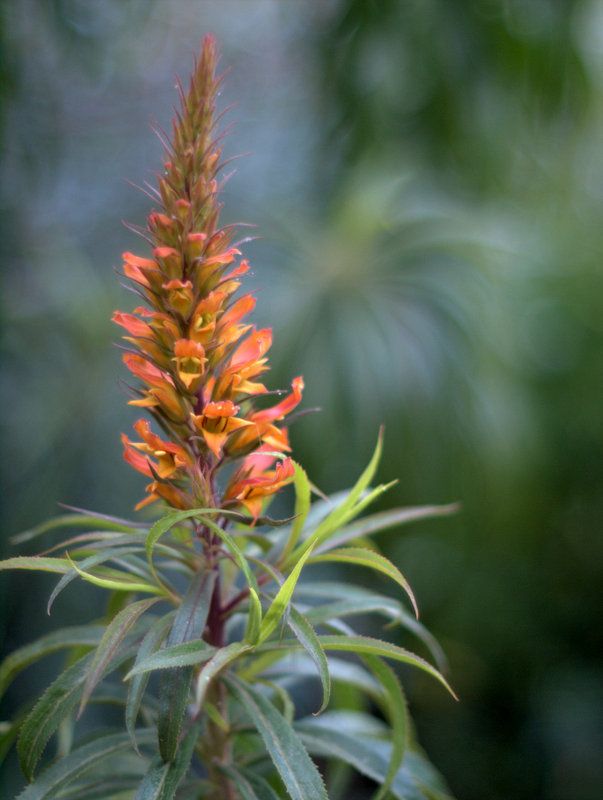
I’d love to see Digitalis ferruginea bloom here, but so far they haven’t take a shine to the garden. But isoplexis is more than enough compensation. Like the bigeneric hybrid digiplexis, the isoplexis attract scale, but overall I think I prefer the shrubbier isoplexis. And with the warmer winters, a big ants and scale problem is the new norm.

Purchased from Jo O’Connell’s Australian Plants Nursery last year, the eucalyptus was planted from a gallon in July 2014. As you can see, it’s fast on its feet. I’ve already trimmed it back a bit but will ultimately give it free rein in this corner, which means shifting and moving everything in its path. Initially I had plans to keep it in a container, a silly idea in a drought. Now I’m hoping to grow it as a large shrub, not a tree. I noted on a recent visit that the Huntington’s new Education and Visitor Center plaza area has planted quite a few of this eucalyptus too.
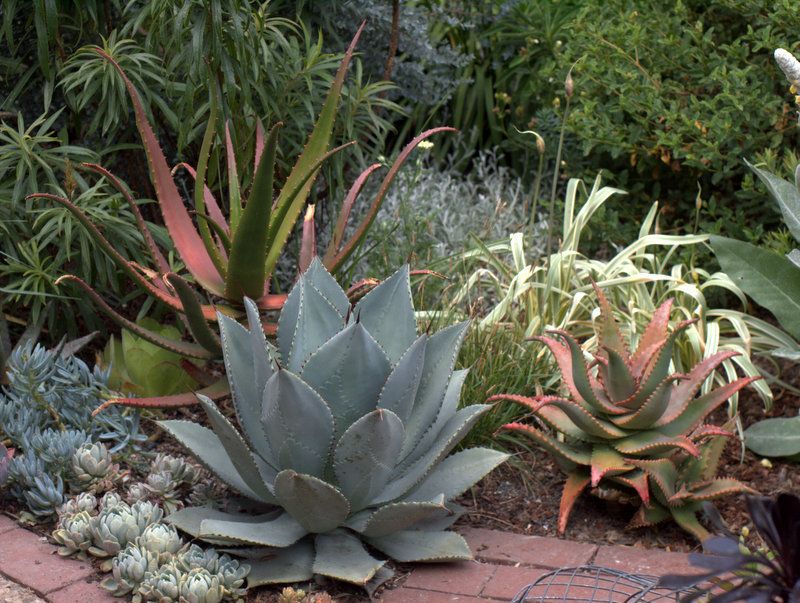
Blue Agave ‘Dragon Toes,’ with Aloe cameronii on the left and Aloe elgonica on the right, both aloes flushed orange from the recent heat waves rolling through every few weeks or so. And then the little variegated agapanthus will bring more blue in a week or so. I’m still apprehensive about agapanthus in my garden, the first time ever. It’s now in bloom all over town. My gamble is that it will seem less quotidian surrounded by succulents and grasses. It’s such a good plant for dry summer gardens. But there’s a strong chance I won’t be able to overcome lifelong prejudices and shopping center associations.
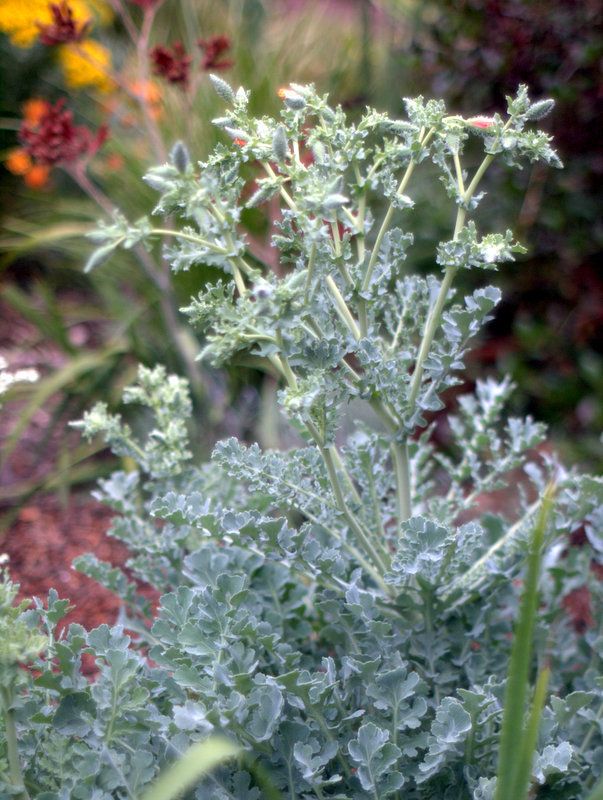
And then silvery-blue Glaucium grandiflorum started building up some imposing bloom architecture. Photo taken May 9, 2015
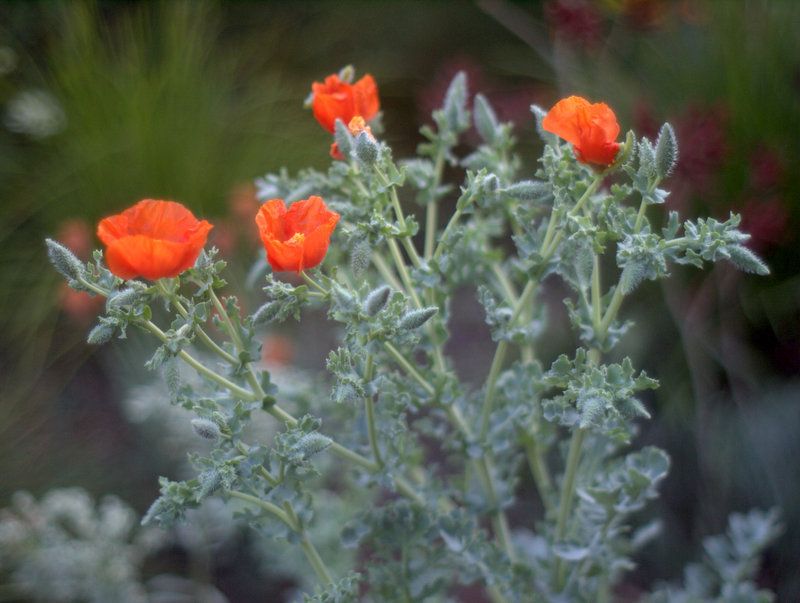
I gasped when I saw these open this morning.
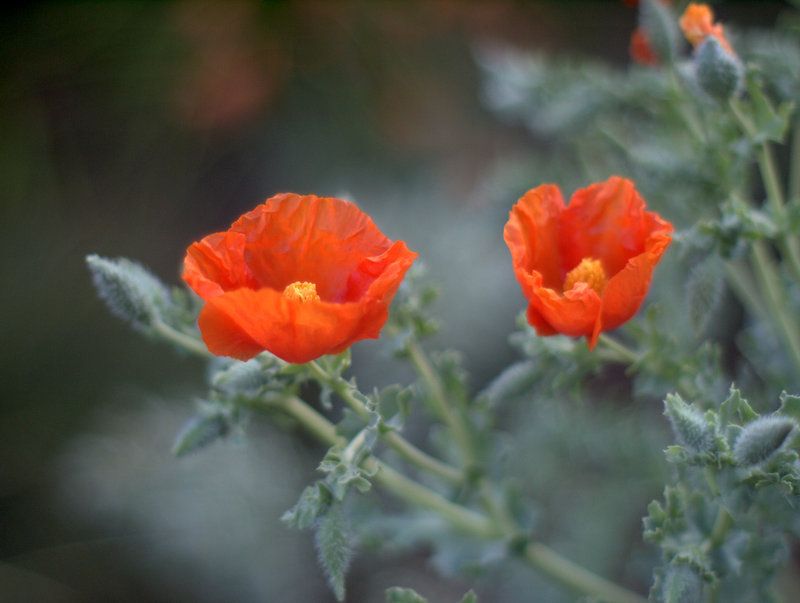
Audibly gasped. Between gasping at flowers and talking to bees, who knows what the neighbors must be thinking by now.

This glaucium might behave as a short-lived perennial or biennial and may or may not set seed. There were no blooms last year, just those magnificent leaves. There’s two clumps, and both plants were covered by the band of shade that lies over this part of the garden in winter, which had me worried a bit. Maybe in a wet winter the shade might have proved fatal. Both clumps are in full sun now. This glaucium is from Annie’s Annuals & Perennials but not listed as available now.
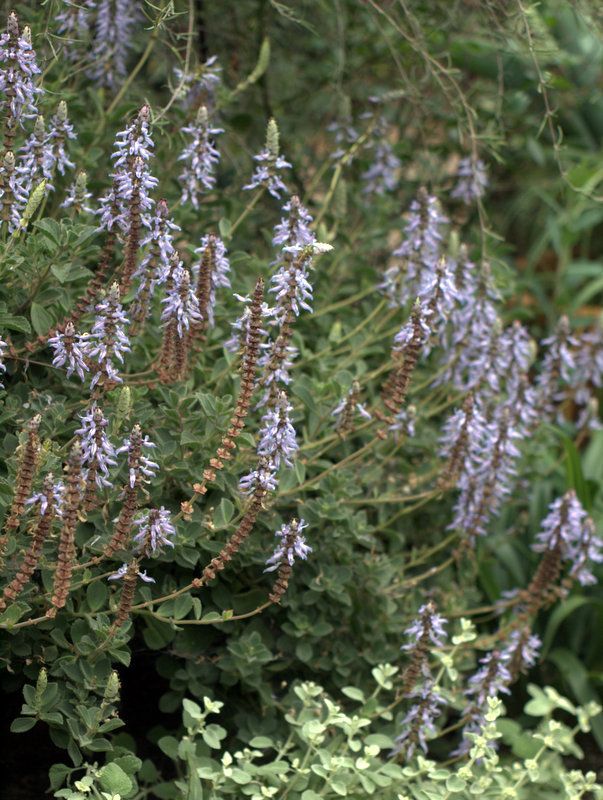
Another big wash of blue (under Acacia baileyana ‘Purpurea’ no less!) from Plectranthus neochilus.
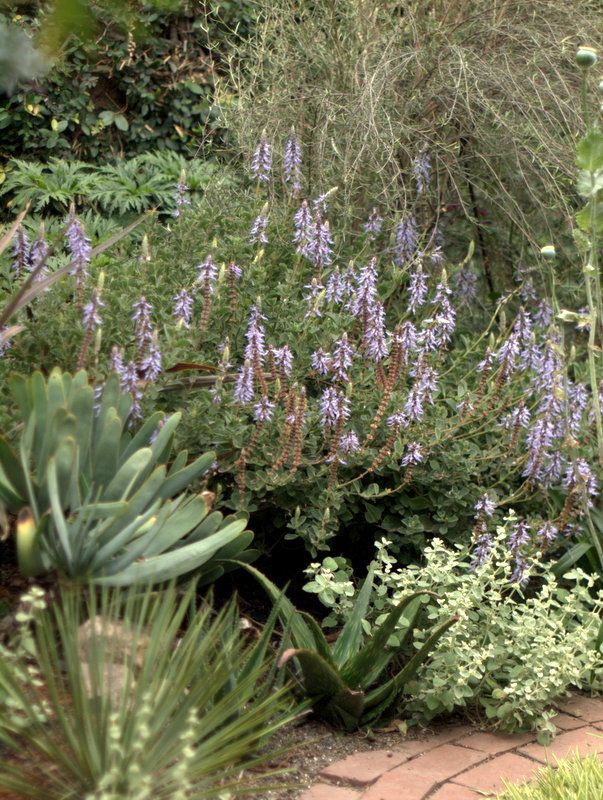
Mostly blues and silver here now, but a lot of aloes have found their way here under the acacia, out of frame (and Helianthemum ‘Henfield Brilliant.’ More orange!)
I hope I don’t get orange and blue fatigue any time soon…

Orange and blue is my favorite combination. Brava!
Re: that Stachys..bought one in April, and it makes a statement–but it needs water.I’m on every other day at this point, left over veg cooking water. A bit of concern with your comment about the shy-blooming Digitalis ferruginiea–I planted mine last year , not sure which month. I have nice new foliage this spring but no sign of blooms. I’m so snobby about Arctotis. I need to get over it.
@Heather, blue and orange just happens if you let it!
@Kathy, my D. ferrug has nice basal leaves too, so it may yet decide to bloom but I’m not optimistic. The clear orange arctotis this year swayed me. And I’m working on plant prejudices too, e.g., agapanthus. Dire times and all. Thanks for the tip on watering that stachys. We had that freak rain right after I planted it so it hasn’t had much since.
I love your blue and orange color scheme! I’m going to put that Glaucium on my Annie’s wish list – it deserves audible gasps. I hope you overcome your Agapanthus prejudice. I suffered from that too and then I moved into a house with more than 40 clumps of Agapanthus (I stopped counting) – it’s pretty impressive when all those flowers arrive at once like a conquering army. I recently overcame one of my own plant issues and picked up a stinky variegated Plectranthus neochilus. No raccoon has plundered the bed in which it’s planted since and, if that situation continues, I may soon fill my garden with stinky Plectranthus.
Orange and blue are the new black? Great combinations! I can see why you audibly gasped at the sight of Glaucium grandiflorum in bloom, it’s stunning!
@Kris, fingers crossed that glaucium sets seed, then I’ll spread it around town. That plectranthus is such a good plant, never gets any water. Yes, it stinks when I clip it back but nothing gag-worthy.
@Peter, but I love black flowers too!